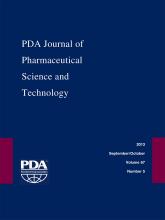Abstract
Risk analysis is widely used in the pharmaceutical industry to manage production processes, validation activities, training, and other activities. Several methods of risk analysis are available (for example, failure mode and effects analysis, fault tree analysis), and one or more should be chosen and adapted to the specific field where they will be applied.
Among the methods available, hazard analysis and critical control points (HACCP) is a methodology that has been applied since the 1960s, and whose areas of application have expanded over time from food to the pharmaceutical industry. It can be easily and successfully applied to several processes because its main feature is the identification, assessment, and control of hazards. It can be also integrated with other tools, such as fishbone diagram and flowcharting. The aim of this article is to show how HACCP can be used to manage an analytical process, propose how to conduct the necessary steps, and provide data templates necessary to document and useful to follow current good manufacturing practices.
LAY ABSTRACT: In the quality control process, risk analysis is a useful tool for enhancing the uniformity of technical choices and their documented rationale. Accordingly, it allows for more effective and economical laboratory management, is capable of increasing the reliability of analytical results, and enables auditors and authorities to better understand choices that have been made.
The aim of this article is to show how hazard analysis and critical control points can be used to manage bacterial endotoxins testing and other analytical processes in a formal, clear, and detailed manner.
- © PDA, Inc. 2013
PDA members receive access to all articles published in the current year and previous volume year. Institutional subscribers received access to all content. Log in below to receive access to this article if you are either of these.
If you are neither or you are a PDA member trying to access an article outside of your membership license, then you must purchase access to this article (below). If you do not have a username or password for JPST, you will be required to create an account prior to purchasing.
Full issue PDFs are for PDA members only.
Note to pda.org users
The PDA and PDA bookstore websites (www.pda.org and www.pda.org/bookstore) are separate websites from the PDA JPST website. When you first join PDA, your initial UserID and Password are sent to HighWirePress to create your PDA JPST account. Subsequent UserrID and Password changes required at the PDA websites will not pass on to PDA JPST and vice versa. If you forget your PDA JPST UserID and/or Password, you can request help to retrieve UserID and reset Password below.






